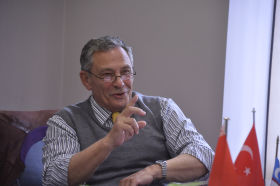EU – Baltic States, Modern EU
International Internet Magazine. Baltic States news & analytics
Saturday, 20.04.2024, 08:39
EU-2020 strategy has shown progress in headline indicators
 Print version
Print version |
|---|
The key objectives of the strategy are expressed by the Eurostat in the form of targets in five areas: employment, research & development (R&D), climate change & energy, education and poverty reduction, to be reached by 2020.
These EU targets have been translated into national targets in order to reflect the situation and possibilities of each EU state to contribute to the common goal.
A set of nine headline indicators and additional sub-indicators, compiled by Eurostat, give an overview of how close the EU is to its overall targets.
Europe 2020 headline indicators: target values and progress since 2008
Employment rate R&D expenditure = Greenhouse gas emissions = Share of renewable energy in gross final energy consumption = Primary energy consumption = Final energy consumption = Early leavers from education and training = Tertiary educational attainment = People at risk of poverty or social exclusion (Data from 2014-15).
Since 2008 substantial progress has been made both in the area of climate change and energy (through the reduction in greenhouse gas emissions and energy consumption combined with an increase in the use of renewable energy sources).
Positive developments are also visible in the area of education (through the increase in the rate of tertiary educational attainment and the reduction in the number of early leavers from education and training).
Progress has been more limited for R&D expenditure, while the distance to the employment and poverty targets has increased.
Situation in the EU member states
The table below features five thematic chapters; country profile for each EU state (seen in the web link below) gives an overall picture of the situation in relation to the EU-2020 targets.
|
Table: Headline indicators |
Past situation |
Current situation |
2020 Target
|
||||||||
|
|
2008 2014-15
|
|
|||||||||
|
1. Employment |
Employment rate, total (% of the population aged 20-64) |
70.3 |
69.2 – 70.1 |
|
≥75.0 |
||||||
|
|
|
|
|
|
|||||||
|
|
|
|
|
|
|||||||
|
2. R&D |
Gross domestic expenditure on R&D (% of GDP) |
1.85 |
2.03 |
|
≥3.00 |
||||||
|
3. Climate change & energy |
Greenhouse gas emissions (index 1990=100) |
90.3 |
77.1 |
|
≤80.0 |
||||||
|
Share of renewable energy in gross final energy consumption (%) |
11.0 |
16.0 |
|
≥20.0 |
|||||||
|
Primary energy consumption (Million tonnes of oil equivalent) |
1 693 |
1 507 |
|
≤1 483 |
|||||||
|
Final energy consumption (Million tonnes of oil equivalent) |
1 180 |
1 061 |
|
≤1 086 |
|||||||
|
4. Education |
Early leavers from education & training, total (% of population aged 18-24) |
14.7 |
11.2-11.0 |
|
<10.0 |
||||||
|
|
|
|
|
|
|||||||
|
|
|
|
|
|
|||||||
|
Tertiary educational attainment, total (% of population aged 30-34) |
31.1 |
37.9 - |
38.7 |
≥40.0 |
|||||||
|
|
|
|
|
|
|||||||
|
|
|
|
|
|
|||||||
|
5. Poverty or social exclusion |
People at risk of poverty or social exclusion (million) |
116.2 |
120.9 |
|
≤96.2 |
||||||
|
People at risk of poverty or social exclusion (% of total population) |
23.7 |
24.4 |
|
|
|||||||
|
|
|
|
|
|
|||||||
|
|
|
|
|
|
|||||||
|
Severely materially deprived people (%) |
8.5 |
8.9 |
|
|
|||||||
Reference: Eurostat, http://ec.europa.eu/eurostat/documents/2995521/7566536/1-19072016-BP-EN.pdf/126e6fa2-7412-43af-b0a2-2e7bf8a0747a. Brussels, 19 July 2016.
Full text available on EUROSTAT website.







 «The Baltic Course» Is Sold and Stays in Business!
«The Baltic Course» Is Sold and Stays in Business!

